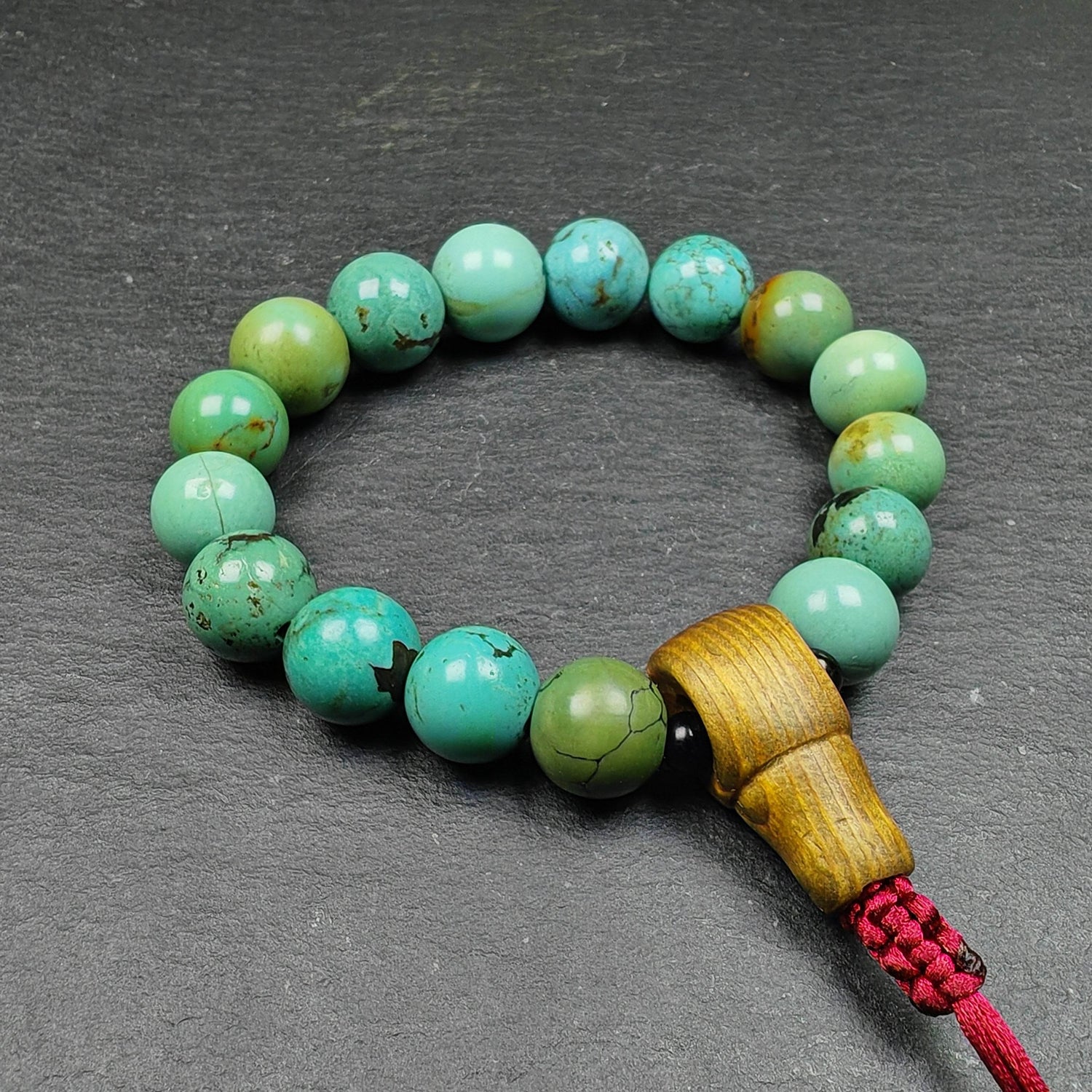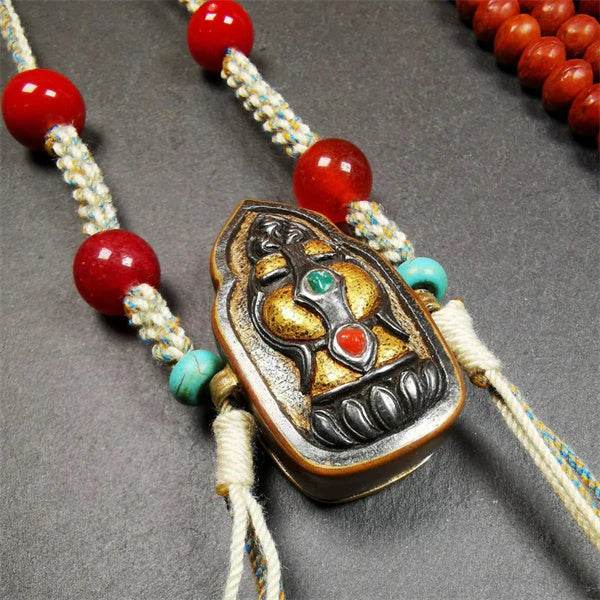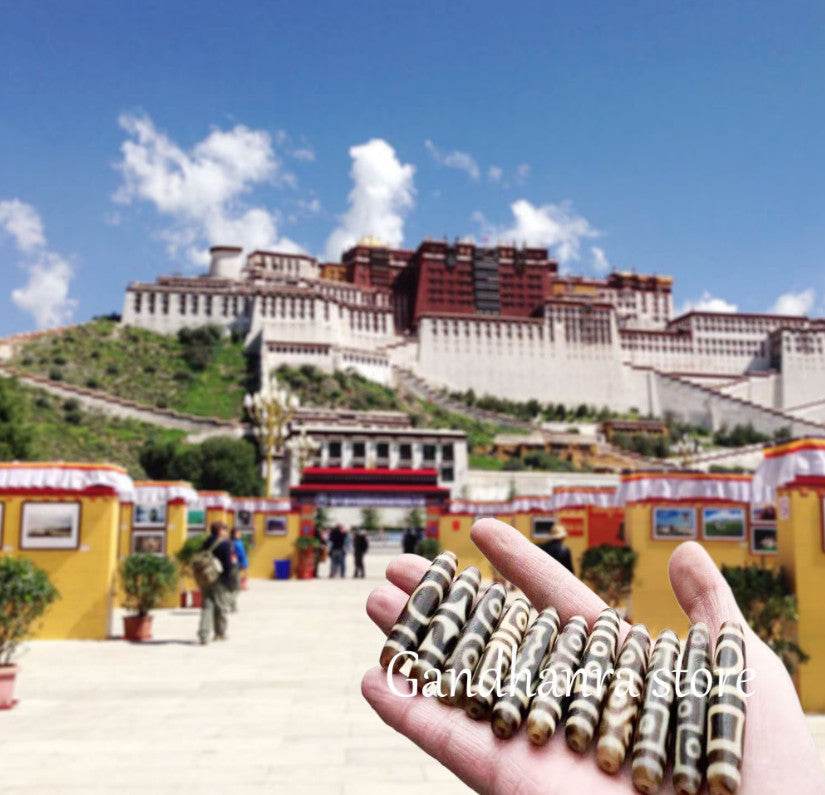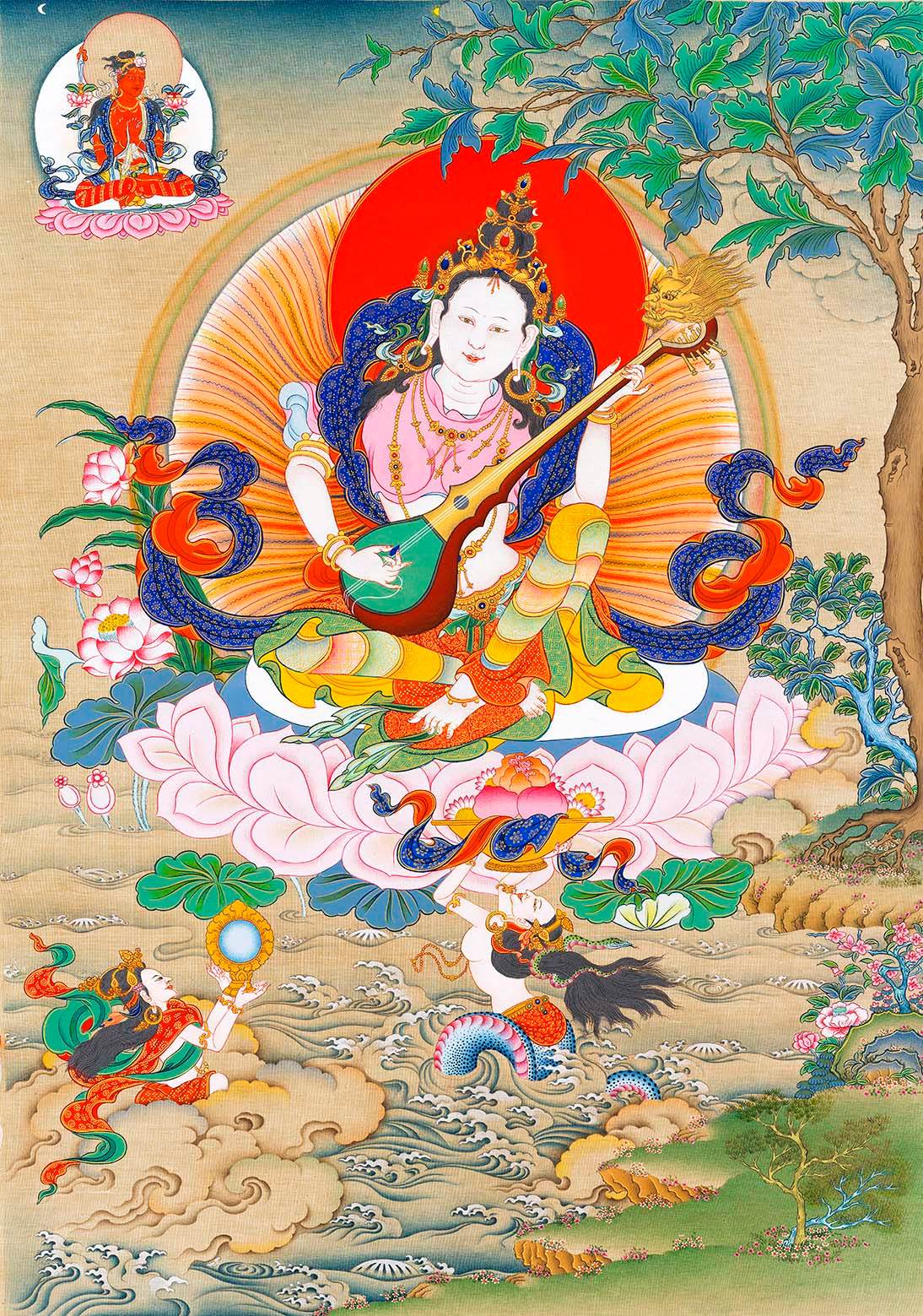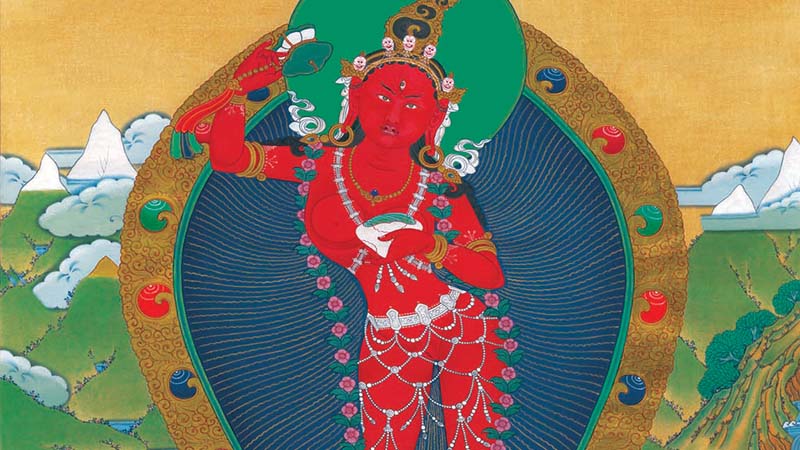
The Wisdom Dakini: Sky-Dancer of Enlightenment and Bliss
The Dakini,
the radiant sky-dancer, embodies dynamic wisdom and liberating bliss. She moves through the realms of existence, cutting through illusion and guiding practitioners to ultimate reality.

Introduction to the Dakini
Dakini (Sanskrit: Dakini; Tibetan: Khandro, meaning "Sky Goer" or "Sky Dancer") is a central and multifaceted figure in Vajrayana Buddhism. She represents the embodiment of pristine wisdom (prajnaparamita) in its most active and energetic form. Unlike serene, seated deities, the Dakini is often depicted in motion—dancing, flying, or standing in a dynamic posture—symbolizing the vibrant, flowing energy of awakening that is beyond all limits.
She is the guide through the inner landscapes of the mind, the consort who reveals the union of bliss and emptiness, and the fierce protector who destroys ego-clinging.

The Origins and History of the Dakini
The concept of the Dakini has roots in ancient Indian Tantric traditions. Initially, they were portrayed as fearsome, witch-like figures inhabiting charnel grounds. Through the profound view of Vajrayana Buddhism, these wild and powerful energies were recognized as symbolic representations of the mind's raw, unadulterated potential for enlightenment.
In Tibetan Buddhism, the Dakini was fully integrated as an essential force on the path. They are seen as messengers, transmitting teachings from realized masters to disciples, and as protectors of the secret mantras. There are various levels of Dakinis, from human female practitioners who have attained realization (yes, women can be Dakinis!) to wisdom Dakinis who are fully enlightened Buddha-forms, such as Vajrayogini.

The Symbolism of the Dakini
Posture (Dancing): Represents the ceaseless, dynamic dance of energy in the universe and the freedom from all rigid concepts.
Skull Cup (Kapala): Holds the nectar of wisdom, symbolizing the transformation of ordinary perception and neuroses into the wine of enlightenment.
Flaying Knife (Kartika): Cuts through the roots of ignorance, ego, and all subtle attachments with sharp, discerning wisdom.
Skull Staff (Khatvanga): Represents the union of method and wisdom, and the realization of the Three Kayas (the three bodies of a Buddha).
Adornments (Bone Ornaments): Symbolize the transmutation of the five poisons (anger, desire, ignorance, pride, jealousy) into the five wisdoms. She is adorned with what is normally repulsive, showing her mastery over samsara and nirvana.

The Dakini Mantra (Core Mantra)
A powerful and common mantra used to invoke the wisdom and blessing of the Dakini, particularly Vajrayogini, is:
"Om Om Om Sarwa Buddha Dakiniye Hum Hum Hum Phat Soha"
Meaning of the Mantra:
Om: The primordial sound, the essence of the universe.
Sarwa Buddha: "All Buddhas."
Dakiniye: Invocation of the Dakini principle.
Hum: The seed syllable of the vajra mind, representing indivisible reality.
Phat: A syllable of power that cuts through obstacles and negative forces.
Soha: (Same as Svaha) "So be it," sealing the mantra.
Chanting this mantra invokes the Dakini's energy for wisdom, purification, and the swift removal of inner and outer obstacles on the path.

How to Connect with the Dakini
Meditation: Visualize her as radiant red light, dancing in a sphere of fire, burning away all conceptual thinking and revealing the luminous clarity of your mind.
Mantra Recitation: Chant her mantra with a focused intention to connect with innate wisdom.
Offerings: Offerings of song, dance, and beautiful objects can be made, symbolizing the offering of one's own energy and attachment.
Cultivate Wisdom in Action: Embody the Dakini's spirit by bringing mindful awareness and a non-attached, joyful perspective to all daily activities.

Conclusion
The Dakini is not a distant goddess but the very expression of our own enlightened nature—luminous, free, and powerfully compassionate. Her fierce and joyful dance reminds us that wisdom is not a passive state but a dynamic, embodied experience.
Whether you seek to cut through confusion, connect with profound wisdom, or experience the bliss of reality itself, inviting the energy of the Dakini can open the door to radical transformation.
May the liberating dance of the Dakini awaken wisdom and bliss in your heart!
Have you ever contemplated the energy of the Dakini in your practice?
Share your insights in the comments below!


